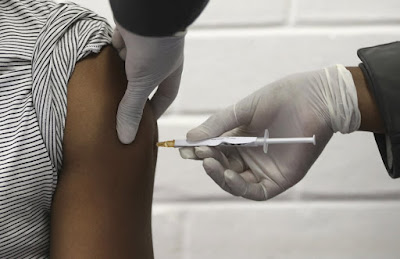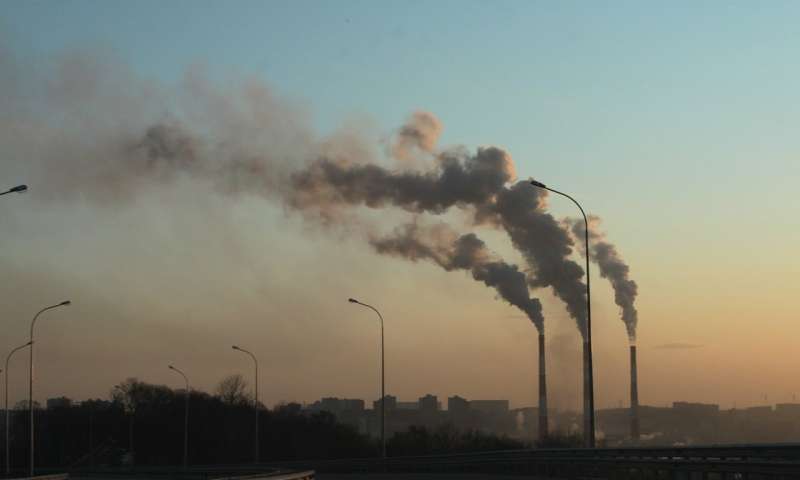By MARIA CHENG and LORI HINNANT October 1, 2020

FILE - In this July 30, 2020 file photo, Kai Hu, a research associate transfers medium to cells, in the laboratory at Imperial College in London. Imperial College is working on the development of a COVID-19 vaccine. South Africa and India on Friday Oct. 2, 2020, asked the World Trade Organization to waive some provisions in the international agreements that regulate intellectual property rights, to speed up efforts to prevent, treat and contain the COVID-19 pandemic and make sure developing countries are not left behind. (AP Photo/Kirsty Wigglesworth, File)
In one of the biggest obstacles, rich countries have locked up most of the world’s potential vaccine supply through 2021, and the U.S. and others have refused to join the project, called Covax.
“The supply of vaccines is not going to be there in the near term, and the money also isn’t there,” warned Rohit Malpani, a public health consultant who previously worked for Doctors Without Borders.
Covax was conceived as a way of giving countries access to coronavirus vaccines regardless of their wealth.
It is being led by the World Health Organization, a U.N. agency; Gavi, a public-private alliance, funded in part by the Bill & Melinda Gates Foundation, that buys immunizations for 60% of the world’s children; and the Coalition for Epidemic Preparedness Innovations, or CEPI, another Gates-supported public-private collaboration.
Covax’s aim is to buy 2 billion doses by the end of 2021, though it isn’t yet clear whether the successful vaccine will require one dose or two for the world’s 7.8 billion people. Countries taking part in the project can either buy vaccines from Covax or get them for free, if needed.
One early problem that has emerged: Some of the world’s wealthiest nations have negotiated their own deals directly with drug companies, meaning they don’t need to participate in the endeavor at all. China, Russia and the U.S. have said they do not intend to join. Other countries, including France and Germany, will technically join Covax but won’t procure vaccines for their citizens via the initiative.
Not only that, but firm agreements with Covax came in too late to prevent more than half of all potential doses being snapped up by countries representing 13% of the world’s population, according to an Oxfam study.
“As a continent of 1.2 billion people, we still have concerns,” Africa Centers for Disease Control and Prevention director John Nkengasong said Thursday.
He praised Covax for the solidarity it represents but said there are serious questions about allocation, saying African nations’ envoys are meeting directly with vaccine manufacturers to ask “if we came to the table with money, how would we get enough vaccines to cover the gap?”
The European Union has contributed 400 million euros ($469 million) to support Covax, but the 27-country bloc won’t use Covax to buy vaccines. Instead, the EU has signed its own deals to buy more than 1 billion doses, after some member states raised concerns about what was described as Gavi’s “dictatorship” approach to running Covax.
Gavi, WHO and CEPI announced in September that countries representing two-thirds of the world’s population had joined Covax, but they acknowledged they still need about $300 million more from governments or other sources. By the end of next year, Gavi estimates the project will need $5 billion more.
Covax did reach a major agreement this week for 200 million doses from the Indian vaccine maker Serum Institute, though the company made clear that a large portion of those will go to people in India.
Covax said negotiations to secure vaccines are moving forward despite the lack of funds.
Gavi’s Aurelia Nguyen, managing director of Covax, said that nothing similar has ever been attempted in public health.
Covax “is a hugely ambitious project,” she said, “but it is the only plan on the table to end the pandemic across the world.”
Full Coverage: Understanding the Outbreak
Still, the project is facing doubts and questions from poor countries and activists over how it will operate and how effective it will be.
Dr. Clemens Auer, who sits on WHO’s executive board and was the EU’s lead negotiator for its vaccine deals, said there is a troubling lack of transparency about how Covax will work.
“We would have no say over the vaccines, the price, the quality, the technical platform or the risks,” Auer said. “This is totally unacceptable.”
He said WHO never consulted countries about its proposed vaccine strategy and called the health agency’s goal of vaccinating the world’s most vulnerable people before anyone else a “noble notion” but politically naive.
As part of Covax, WHO and Gavi have asked countries to first prioritize front-line health workers, then the elderly, with the goal of vaccinating 20% of the world’s population.
One expensive hurdle is that many of the vaccine candidates need to be kept cold from factory to patient, according to internal documents from Gavi. Industry has signaled that “air freight for COVID vaccines will be a major constraint,” and a “significant and urgent ramp-up of cold chain capacity” may be needed.
On Thursday, Gavi announced it will provide $150 million to help some countries with planning, technical assistance and refrigeration equipment.
Another obstacle: Many of the leading vaccine candidates require two doses. That will mean twice as many syringes, twice as much waste disposal, and the complications involved in ensuring patients in remote corners of the world receive the second dose on time and stay free of side effects.
“Because of the fact that we’re looking at trying to get vaccines out as quickly as possible, we’re looking at limited follow-up and efficacy data,” said Gian Gandhi, who runs logistics from UNICEF’s supply division in Copenhagen.
There is also concern that the fear of lawsuits could scuttle deals. According to the internal documents, Gavi told countries that drug companies will probably require assurances that they won’t face product liability claims over deaths or side effects from their vaccines.
Dr. Nakorn Premsi, director of Thailand’s National Vaccine Institute, said officials there are reviewing whether that condition is acceptable. Thailand so far has signed only a nonbinding agreement with Covax.
Some critics say Gavi isn’t ambitious enough. The pandemic won’t end until there is herd immunity well beyond the rich nations that have secured their own doses, said Eric Friedman, a scholar of global health law at Georgetown University who is generally supportive of Covax.
“If we want to achieve herd immunity and get rid of this, 20% is not going to do it,” he said. “What’s the end game?”
Alicia Yamin, an adjunct lecturer on global health at Harvard University, said she fears the “window is closing” for Covax to prove workable. She said it is disappointing that Gavi, WHO and their partners haven’t pushed pharmaceutical companies harder on issues like intellectual property or open licenses, which might make more vaccines available.
With little evidence of such fundamental change in the global health world, Yamin said it’s likely that developing countries will have to rely on donated vaccines rather than any equitable allocation program.
“I would say that poor countries probably will not get vaccinated until 2022 or 2023,” Yamin said.
___
Lori Hinnant reported from Paris. Cara Anna contributed from Johannesburg.
___
Follow AP’s pandemic coverage at http://apnews.com/VirusOutbreak and https://apnews.com/UnderstandingtheOutbreak
























